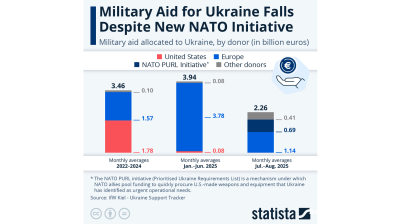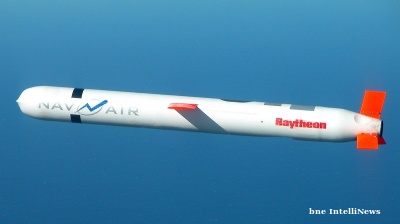The seasonally adjusted S&P Global Russia Manufacturing Purchasing Managers’ Index was up slightly in August to 52.7 from the previous month’s 52.1 in July, “pointing to a solid strengthening of operating conditions that was more pronounced than seen in the previous survey period,” S&P said in a press release on September 1. (chart)
The health of the sector has now improved in each of the past 16 months. Anything above the 50 no-change mark is an expansion.
“Russian manufacturing production continued to expand midway through the third quarter of the year on the back of solid new order growth. That said, inflationary pressures intensified again due to currency weakness, pushing rates of input cost and output price inflation to [their] strongest in 17 and 16 months respectively,” S&P said.
As bne IntelliNews recently reported, Russia’s economy is on course to finish the year with relatively strong growth of over 2%, but analysts warn that it is coming off the boil as war-related stresses begin to cut into the positive news. Rising inflation is one of those problems.
But it is going to take a while for these problems to really make themselves felt, even if they are starting to become visible.
For Russian manufacturers new order growth quickened to a three-month high as firms reported improving market demand. Total new business was supported by a solid expansion in new export orders.
“Moreover, the rate of growth was the steepest since March 2008. Some firms reported having secured new business from customers in neighbouring countries,” S&P reports.
With new orders up, firms expanded production for the thirteenth month in a row, albeit at a modest pace that was the softest in the current sequence of growth.
Despite the overall improvement in operating conditions, manufacturers in Russia were faced with steep cost increases amid a weakness of the ruble, which fell to RUB100 to the dollar in the middle of August. Input prices rose at their fastest pace since March 2022, with 59% of respondents signalling an increase during the month.
In turn, the pace of output price inflation also quickened and was the fastest in 16 months.
The potential impact of currency weakness acted to dampen business confidence, which fell to a six-month low. Nonetheless, firms continued to predict an increase in output over the coming year, often reflecting plans to expand production lines and improve efficiency.
Employment continued to rise in August as manufacturers responded to higher new orders. That said, staff shortages and employee resignations reportedly limited the pace of job creation, which eased to a nine-month low. Russia has just reported a new all-time low unemployment of 3% – the lowest since Soviet-times.
Firms also increased their purchasing activity, and at a rapid pace that was faster than that seen in July. According to respondents, the rise in input buying was in part due to efforts to replenish stocks of purchases, which had fallen sharply in the previous survey period. As a result, the rate of depletion in pre-production inventories was much softer in August, although the use of inputs to support output meant that a decline was still registered.
The delivery of purchased items continued to be hit by logistical challenges. Suppliers' delivery times lengthened markedly, and to the greatest extent since last October, S&P reports.
As well as seeing a decline in stocks of purchases, manufacturers also posted a reduction in stocks of finished goods, the second month running in which that has been the case. Moreover, the rate of depletion was solid and the most pronounced since May 2022. Panellists reported that the shipping of finished products from warehouses to help meet order requirements was a key factor behind the fall in inventories.
The use of stocks of finished goods in fulfilling new orders meant that firms were able to reduce backlogs of work again in August. Outstanding business decreased for the eighth successive month, and to the largest extent since October last year.
Data

India’s retail payment revolution
India’s payments landscape has reached a pivotal stage, with digital transactions now accounting for 99.8% of all retail payments.

Military aid for Ukraine falls despite new Nato PURL initiative – Statista
The Kiel Institute for the World Economy found that military aid to Ukraine dropped sharply in July and August compared to previous months, despite the implementation of the Nato PURL initiative.

IMF cuts Russia’s 2025 growth forecast to 0.6%, leaves Ukraine's unchanged at 2%
The International Monetary Fund has lowered its forecast for Russia’s economic growth in 2025 to just 0.6%, marking the second-steepest downgrade among major economies, even as it raised its global outlook.

Russia's PMI indices plummet as economy cools
Russia’s private sector entered deeper contraction in September, as both services and manufacturing activity declined, according to the latest PMI data published by S&P Global.



